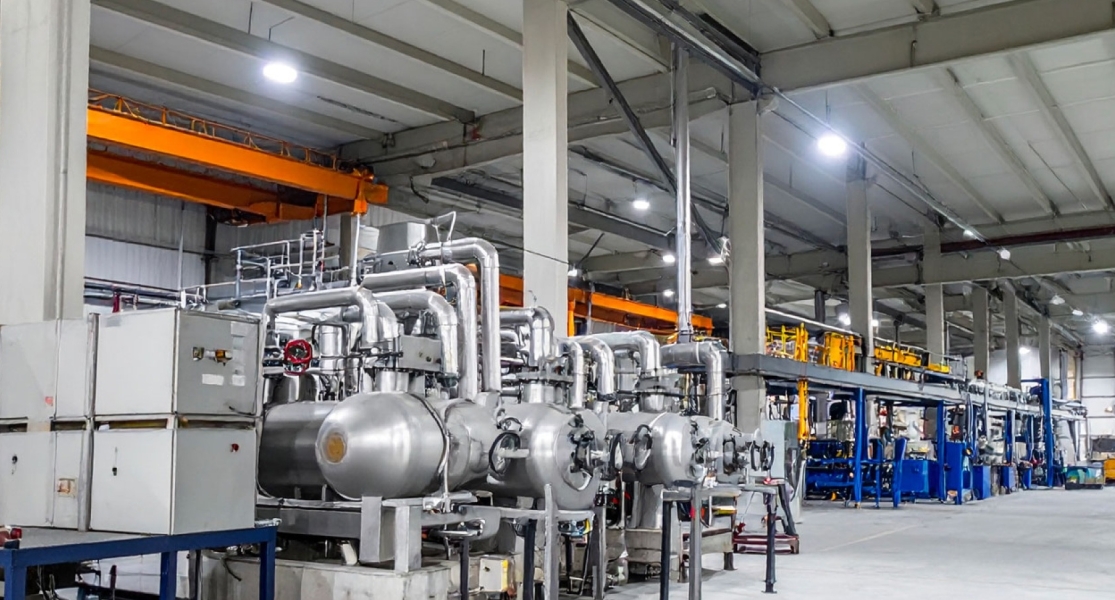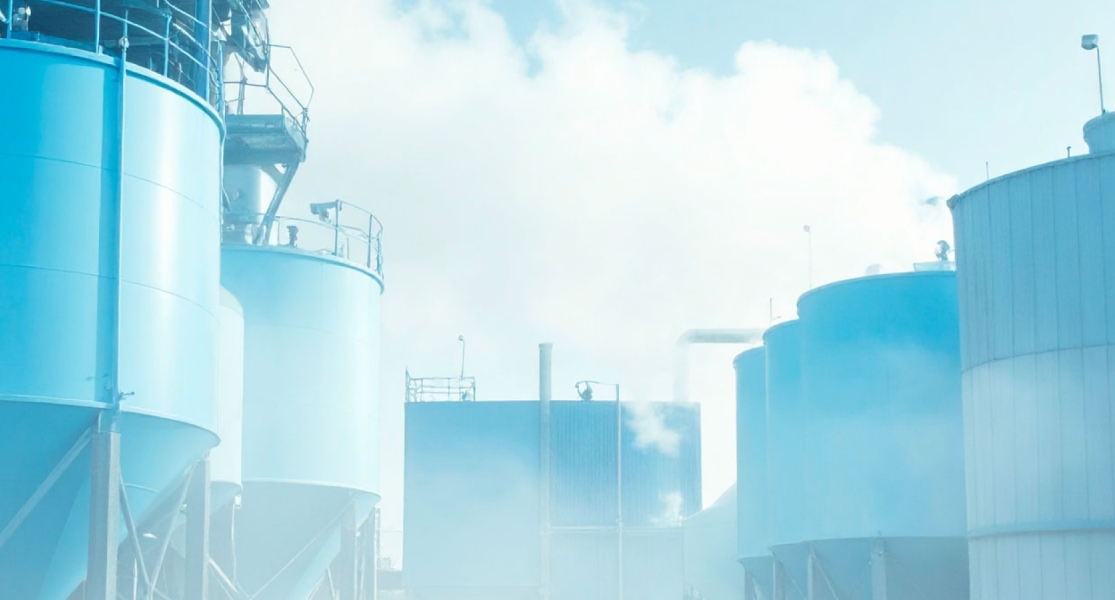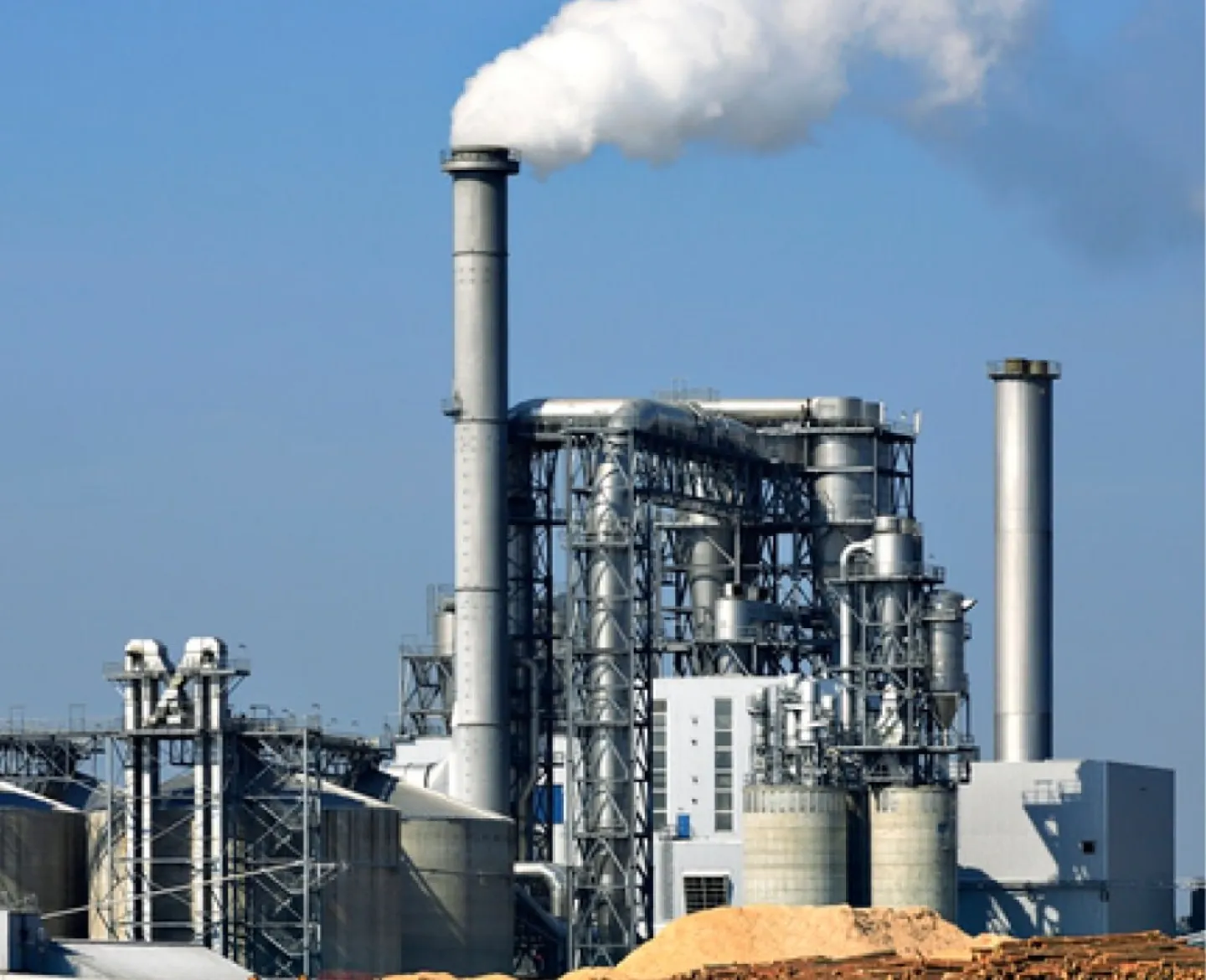
Quadrupling chemical production
Context
Since 2008, ATIS Énergie has been supporting a major chemical producer in its mission to reduce energy consumption at its main site in Quebec. The company’s vast industrial complex is made up of more than 150 buildings.
Our accomplishments
Comprehensive audit of the site performed in 2008
Designed and implemented Engineering, Procurement and Construction Management (EPCM) projects for an integrated energy recovery, management and distribution system in the plant’s most energy-intensive sector
Designed energy recovery systems for distillation columns
Designed and implemented (EPCM) an energy recovery network
Designed and implemented (EPCM) renewable thermal energy production systems
Designed and implemented (EPCM) energy supply and production systems for new buildings on the industrial site
Results
This project, carried out in 2016, involved implementing integrated networks for the recovery, distribution, accumulation and recovery of thermal energy from renewable sources
Deployed a heat network spanning several kilometres
Installed infrastructure to produce renewable thermal energy
Annual reduction in energy consumption equivalent to 9 GWh in electricity and 200,000m³ of natural gas
This producer has expanded its operations in recent years, significantly increasing its production capacity while developing several new products. This growth has resulted in the addition of several dozen new buildings on the site. We were tasked to oversee all industrial processes and energy management for the entire project, to take care of all industrial processes and energy management for the entire project, covering both existing and new buildings.
Our accomplishments
Full site energy audit performed in 2016
Designed and implemented (ECPM) energy-efficient systems for new buildings
Implemented heat recovery systems from exothermic processes, allowing both old and new buildings to be heated, in addition to supplying existing and future exothermic processes
Designed a cooling network for air conditioning new buildings;
Designed and implemented (EPCM) integrated energy systems for all site buildings, both old and new
Designed and implemented (EPCM) several dozen kilometres of heating and air conditioning networks
Results
Our energy management strategy, focused on efficiency and innovation, proved to be cost-effective for our client
We implemented an additional power block of less than 5 MW significantly less than conventional demand requiring close to 30 MW
Energy savings of up to 50 GWh per year, representing a reduction in operating costs of more than $8 million annually
Efficient energy use meant we could avoid using natural gas, thus avoiding the equivalent of up to 9,000 of CO₂ emissions per year
Implemented several tens of kilometres of thermal and air conditioning networks
Deployed exothermic process energy recovery infrastructures, allowing this energy to be redistributed to new and existing heat-consuming buildings and processes

32% reduction in steam production at a pulp & paper mill
Context
Concerned about its energy performance, a pulp & paper mill called on our expertise to identify savings opportunities to bolster its in-house efforts.
Over the years, ATIS Énergie has carried out various opportunity studies at different plants within the company. Each one has revealed significant potential for reducing energy consumption along with greenhouse gas emissions.
One of the studies, carried out at a containerboard plant, showed particularly promising potential. We proposed a solution that involves rethinking the plant’s energy infrastructure to reduce the use of steam by replacing it with hot water, where possible. This approach allows for a more efficient use of thermal energy.
This project will allow the plant to increase its production capacity while maintaining its existing steam production and distribution infrastructure, leading to long-term energy efficiency gains.
Main actions to be implemented
- Reduce steam production in boilers with a series of targeted measures
- Recover heat from evaporator condensers and water tower
- Construction of new facilities to accommodate the majority of equipment required, due to lack of space in existing plant
- Improve the paper machine’s operational flexibility
- Optimize steam shower feed
Expected results
Reduction of 48,000 lb/h (32%) in steam production at the pulp & paper mill, generating annual savings of close to $6 million
Possibility of operating solely on biomass for steam production, with the electric boiler as a backup in the event of a wood-fired boiler breakdown
Both oil-fired boilers can be shut down, eliminating fuel oil consumption
Reduce GHG emissions by 12,000 tCO2e
Annual steam production savings of $7.5 million, resulting in a return on investment in less than 3 years

Recovering excess heat from a 50 MW foundry furnace
Context
A foundry identified a high-potential opportunity to generate new revenue by recovering excess heat from its 50 MW industrial furnace. This project involves recovering the furnace’s cooling water at approximately 65°C and converting this heat into superheated steam at a minimum pressure of 12 barg (Tsat 192°C). The goal is to supply the thermal processes at an adjacent plant via a steam network spanning several kilometres.
Our accomplishments
Increase cooling water temperature to 62–65°C and extract heat efficiently
Generate vacuum steam followed by mechanical recompression to 9 barg
Use motive steam from the existing boiler to increase steam pressure to 13–14 barg
Install a 12-inch steam line on the existing route connecting the two plants
Expected results
Approx. 21,000 kg/h of steam produced from the recovery of heat from the cooling water of the furnace
Nearly 5 MW of power used for this production through mechanical recompression
Supply of an additional 15 MW of heat to the client’s plant
Reduction in greenhouse gas emissions estimated up to 25 000 tCO₂e per year
